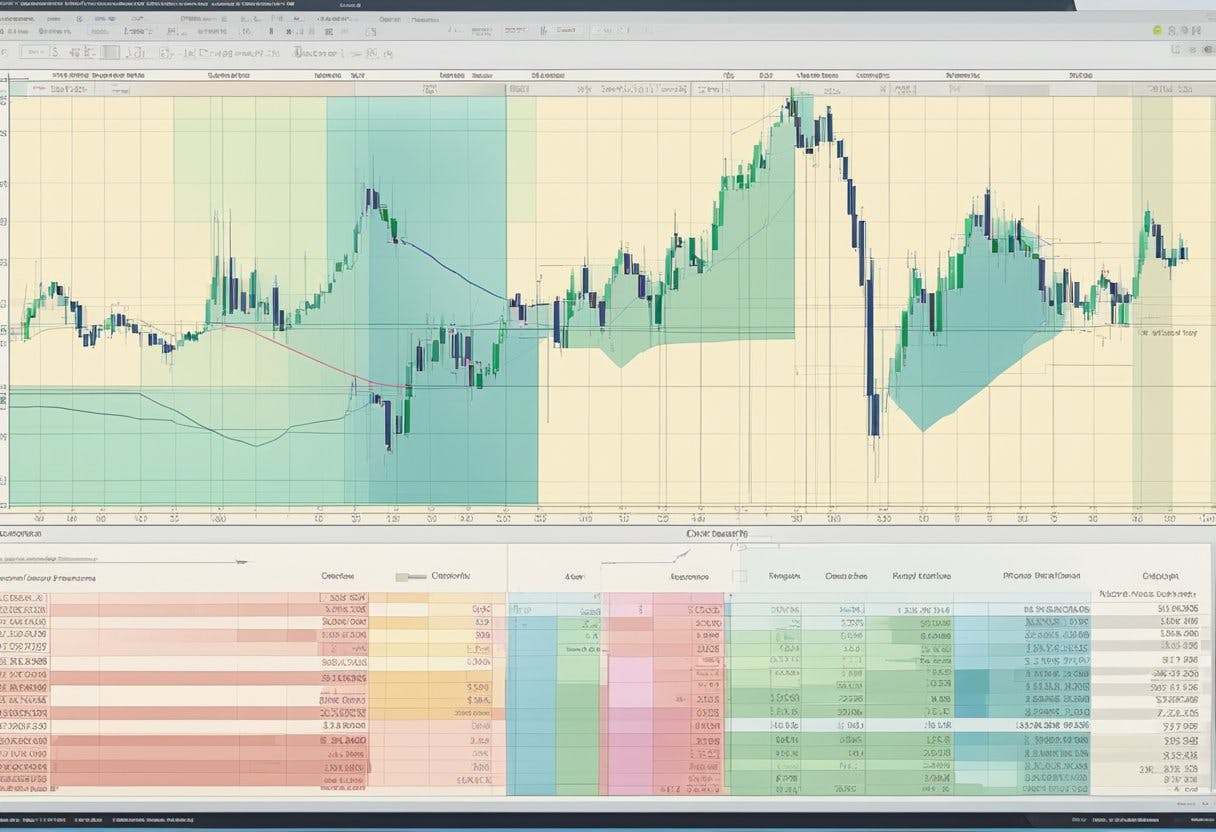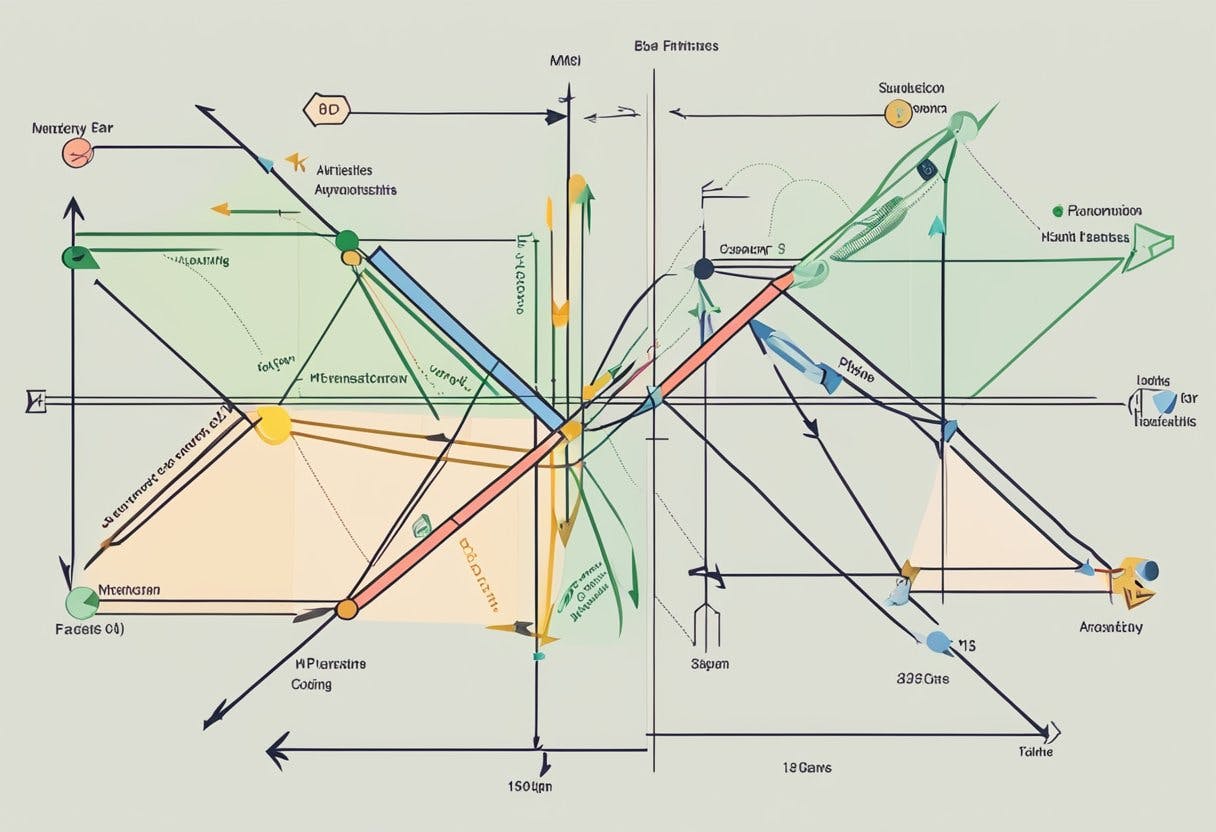
Currency pairs are the foundation of the foreign exchange (Forex) market, where traders buy and sell different currencies with the expectation of making a profit. Understanding currency pairs is essential for anyone looking to trade in the Forex market. Currency pairs are the national currencies from two countries coupled for trading on the foreign exchange.

The Forex market is the largest financial market in the world, and it operates 24 hours a day, five days a week. The market is open because there are always banks and businesses around the world that need to buy and sell currencies. The Forex market is decentralized, which means that there is no central exchange where all trades take place. Instead, traders use electronic networks to make transactions.
To trade in the Forex market, traders must understand the basics of Forex trading, including the concept of currency pairs. Currency pairs are divided into two categories: major and minor. Major currency pairs involve the most traded currencies globally, including the US Dollar (USD), Euro (EUR), Japanese Yen (JPY), British Pound (GBP), Australian Dollar (AUD), Swiss Franc (CHF), Canadian Dollar (CAD), and New Zealand Dollar (NZD). Minor currency pairs, also known as cross-currency pairs, do not involve the US Dollar.
Key Takeaways
- Understanding currency pairs is essential for anyone looking to trade in the Forex market.
- The Forex market is the largest financial market in the world, and it operates 24 hours a day, five days a week.
- Currency pairs are divided into two categories: major and minor.
The Fundamentals of Forex Trading

Forex trading is the process of exchanging one currency for another. It is the largest financial market in the world, with an average daily trading volume of $6.6 trillion as of 2019. Understanding the fundamentals of forex trading is essential for anyone looking to enter this market.
Understanding Forex Market Dynamics
The forex market is a decentralized market, meaning that it does not have a physical location. It is a global network of banks, financial institutions, and individual traders, all of whom are connected electronically. The forex market operates 24 hours a day, five days a week, and is open to traders from all over the world.
One of the key features of the forex market is liquidity. This refers to the ease with which a trader can buy or sell a currency. The forex market is highly liquid, meaning that there is always a buyer and a seller for any given currency pair. This high level of liquidity makes it easy for traders to enter and exit the market quickly.
Key Forex Trading Concepts
Currencies
Forex trading involves the exchange of one currency for another. Currencies are always traded in pairs, with the first currency in the pair being the base currency and the second currency being the quote currency. For example, in the EUR/USD currency pair, the euro is the base currency and the US dollar is the quote currency.
Major Pairs, Minor Pairs, and Exotic Pairs
There are three categories of currency pairs: major pairs, minor pairs, and exotic pairs. Major pairs are the most commonly traded currency pairs and include the EUR/USD, USD/JPY, and GBP/USD pairs. Minor pairs, also known as cross currency pairs, do not include the US dollar and are less commonly traded. Exotic pairs are currency pairs that include one of the major currencies and a currency from an emerging market.
Base Currency and Quote Currency
The base currency is the currency that is being bought or sold, while the quote currency is the currency that is being used to buy or sell the base currency. For example, if a trader buys the EUR/USD pair, they are buying euros and selling US dollars.
Spreads
The spread is the difference between the bid price and the ask price of a currency pair. The bid price is the price at which a trader can sell a currency pair, while the ask price is the price at which a trader can buy a currency pair. The spread represents the cost of trading and is typically measured in pips.
In conclusion, understanding the fundamentals of forex trading is essential for anyone looking to enter this market. The forex market is highly liquid and operates 24 hours a day, five days a week. Currencies are always traded in pairs, and there are three categories of currency pairs: major pairs, minor pairs, and exotic pairs. The base currency is the currency being bought or sold, while the quote currency is the currency being used to buy or sell the base currency. Finally, the spread represents the cost of trading and is typically measured in pips.
Currency Pairs Explained

Currency pairs are the backbone of the foreign exchange market, where one currency is exchanged for another. A currency pair is a quotation of the value of one currency against another currency. In forex trading, currencies are always traded in pairs. The first currency listed in the pair is called the base currency, while the second currency is called the quote currency.
Major Currency Pairs
The major currency pairs are the most frequently traded pairs in the forex market. These pairs are the most liquid and have the tightest spreads, making them attractive to traders. The major currency pairs include the EUR/USD, GBP/USD, USD/JPY, and USD/CHF. The EUR/USD is the most popular currency pair, accounting for over 20% of all forex trades.
Minor and Exotic Currency Pairs
Minor currency pairs, also known as crosses, are currency pairs that do not include the US dollar. These pairs are less frequently traded than the major currency pairs and tend to have wider spreads. Examples of minor currency pairs include the EUR/GBP, AUD/JPY, and GBP/JPY.
Exotic currency pairs are currency pairs that include one of the major currencies and one of the currencies of a developing country. These pairs are less liquid than the major and minor pairs and tend to have wider spreads. Examples of exotic currency pairs include the USD/HKD, USD/SGD, and USD/TRY.
Understanding currency pairs is essential for forex traders to make informed trading decisions. Traders need to be aware of the characteristics of each currency pair, such as volatility, liquidity, and spreads. By understanding the different types of currency pairs, traders can choose the pairs that best fit their trading strategy.
Economic Factors Influencing Currency Values

The value of a country’s currency is influenced by various economic factors. Understanding these factors is crucial for predicting currency movements and making informed trading decisions. In this section, we will discuss two key economic factors that impact currency values: interest rates and inflation, and economic indicators and events.
Interest Rates and Inflation
Interest rates and inflation are two of the most important factors that impact currency values. Central banks use interest rates as a tool to influence inflation, which is the rate at which the general level of prices for goods and services is rising. When interest rates are high, borrowing becomes more expensive, which can lead to lower spending and lower inflation. This, in turn, can lead to a stronger currency. Conversely, lower interest rates can lead to higher spending and higher inflation, which can weaken a currency.
Inflation rates are also important because they reflect the overall economic situation of a country. High inflation can be a sign of an overheating economy, which can lead to a weaker currency. Conversely, low inflation can be a sign of a sluggish economy, which can also lead to a weaker currency.
Economic Indicators and Events
Economic indicators and events can also impact currency values. GDP, or gross domestic product, is a measure of a country’s economic output and is closely watched by traders. A strong GDP can lead to a stronger currency, while a weak GDP can lead to a weaker currency.
Other economic indicators, such as employment data and consumer confidence, can also impact currency values. Positive employment data, such as a low unemployment rate, can lead to a stronger currency, while negative employment data can lead to a weaker currency. Similarly, high consumer confidence can lead to a stronger currency, while low consumer confidence can lead to a weaker currency.
Political and geopolitical events can also impact currency values. Elections, trade agreements, and geopolitical tensions can all lead to currency movements. For example, a country that is experiencing political instability or conflict may experience a weaker currency, while a country that is seen as stable and secure may experience a stronger currency.
In summary, economic factors play a crucial role in determining currency values. Traders must stay informed about economic data, indicators, and events in order to make informed trading decisions.
Technical and Fundamental Analysis
When it comes to understanding currency pairs, traders use two main types of analysis to inform their trading strategy: technical analysis and fundamental analysis.
Chart Analysis and Patterns
Technical analysis involves studying past market data, primarily using charts and technical indicators, to identify patterns and predict future price movements. This type of analysis assumes that historical price movements are a good indicator of future price movements. Technical analysts use a variety of chart patterns, such as head and shoulders, triangles, and flags, to identify potential trading opportunities.
Traders who use technical analysis also rely on technical indicators, such as moving averages, Bollinger Bands, and the Relative Strength Index (RSI), to help identify potential entry and exit points. These indicators are used to identify trends, momentum, and potential areas of support and resistance.
Fundamental Analysis Tools
Fundamental analysis, on the other hand, looks at economic indicators, market sentiment, and political stability to determine the value of a currency. This type of analysis assumes that a currency’s value is based on the underlying economic and political factors that affect the country’s economy.
Traders who use fundamental analysis look at economic indicators such as GDP, inflation, and interest rates to determine the strength of a country’s economy. They also look at market sentiment, which refers to the overall mood or attitude of traders towards a particular currency. Finally, they consider political stability, which can have a significant impact on a country’s economy and, therefore, its currency.
Overall, traders often use a combination of technical and fundamental analysis to inform their trading decisions. By using both types of analysis, traders can get a more complete picture of the market and potentially identify more trading opportunities.
Risk Management in Forex Trading
Forex trading is a highly profitable but risky endeavor. To navigate these risks successfully, traders must implement effective risk management strategies. In this section, we will discuss some of the key concepts of risk management in Forex trading.
Understanding Leverage and Margin
Leverage and margin are two important concepts in Forex trading. Leverage allows traders to control a large amount of currency with a small investment. Margin, on the other hand, is the amount of money that a trader needs to put up to open a position.
While leverage can increase profits, it can also increase losses. Therefore, it is important to use leverage wisely and to understand the risks involved. Traders should also be aware of margin requirements and make sure they have enough margin to cover their positions.
Developing a Trading Strategy
Developing a trading strategy is an important part of risk management in Forex trading. A trading strategy should include entry and exit points, stop-loss orders, and profit targets. Traders should also consider using hedging strategies to reduce their risk.
A demo account can be a useful tool for developing and testing a trading strategy. Demo accounts allow traders to practice trading without risking real money. This can help traders to refine their strategies and gain confidence before trading with real money.
In conclusion, risk management is an essential part of Forex trading. Traders should understand the risks involved and implement effective risk management strategies. By using leverage wisely, developing a trading strategy, and using hedging strategies, traders can reduce their risk and increase their chances of success.
Frequently Asked Questions
How do you identify and analyze a currency pair in forex trading?
Currency pairs are identified by their unique symbols, which represent the two currencies being traded. For example, the EUR/USD currency pair represents the euro and the US dollar. To analyze a currency pair, traders use technical and fundamental analysis to determine the direction of the market. Technical analysis involves studying price charts and using technical indicators to identify trends and potential trading opportunities. Fundamental analysis, on the other hand, involves analyzing economic and political events that may affect the value of a currency.
What is the significance of the base currency being stronger than the quote currency?
In forex trading, the base currency is the first currency in a currency pair, and the quote currency is the second currency. When the base currency is stronger than the quote currency, it means that one unit of the base currency can buy more units of the quote currency. This is known as a strong base currency. Traders may use this information to make trading decisions, such as buying the currency pair or holding a long position.
Can you explain the concept of forex quotes and how they work?
Forex quotes are the prices at which currency pairs are traded in the forex market. They are expressed in two prices: the bid price and the ask price. The bid price is the price at which a trader can sell a currency pair, while the ask price is the price at which a trader can buy a currency pair. The difference between the bid and ask price is known as the spread. Forex quotes are constantly changing in response to market conditions and economic events.
What are the major currency pairs, and why are they considered crucial in the forex market?
The major currency pairs are the most traded currency pairs in the forex market. They include the EUR/USD, USD/JPY, GBP/USD, USD/CHF, AUD/USD, and USD/CAD. These currency pairs are considered crucial in the forex market because they offer high liquidity and tight spreads, making them more attractive to traders. Additionally, they are often used as benchmarks for evaluating the performance of other currency pairs.
What should traders consider when looking to profit from currency trading?
Traders should consider a variety of factors when looking to profit from currency trading. These include market conditions, economic events, technical indicators, and risk management strategies. It is important for traders to have a solid understanding of these factors and to develop a trading plan that takes them into account.
How does the relationship between base currency and local currency affect currency trading?
The relationship between the base currency and the local currency can have a significant impact on currency trading. When the base currency is the same as the trader’s local currency, it can be easier to understand the value of the currency pair and make more informed trading decisions. However, when the base currency is different from the trader’s local currency, it may be more difficult to understand the value of the currency pair and to make accurate trading decisions. Traders should take this into account when choosing which currency pairs to trade.
Read More




